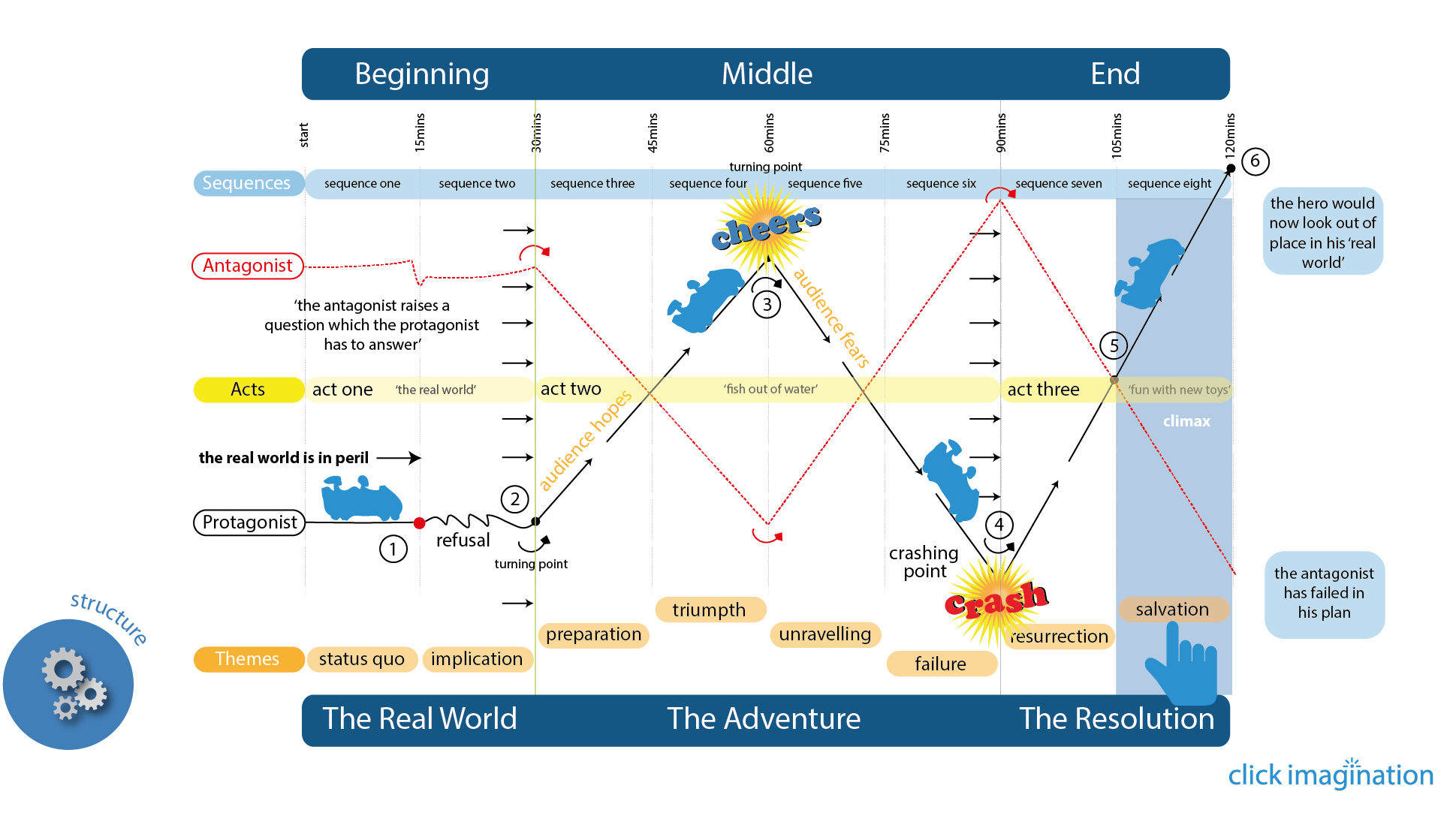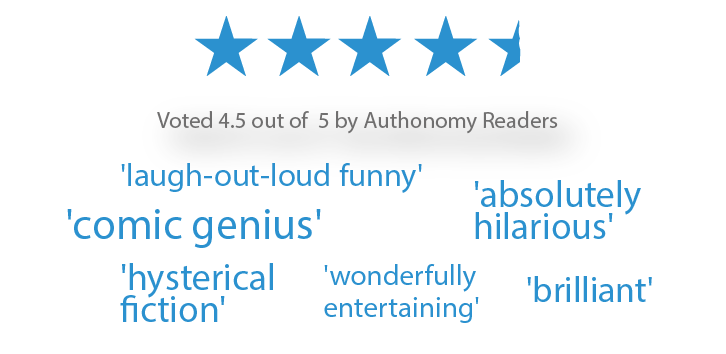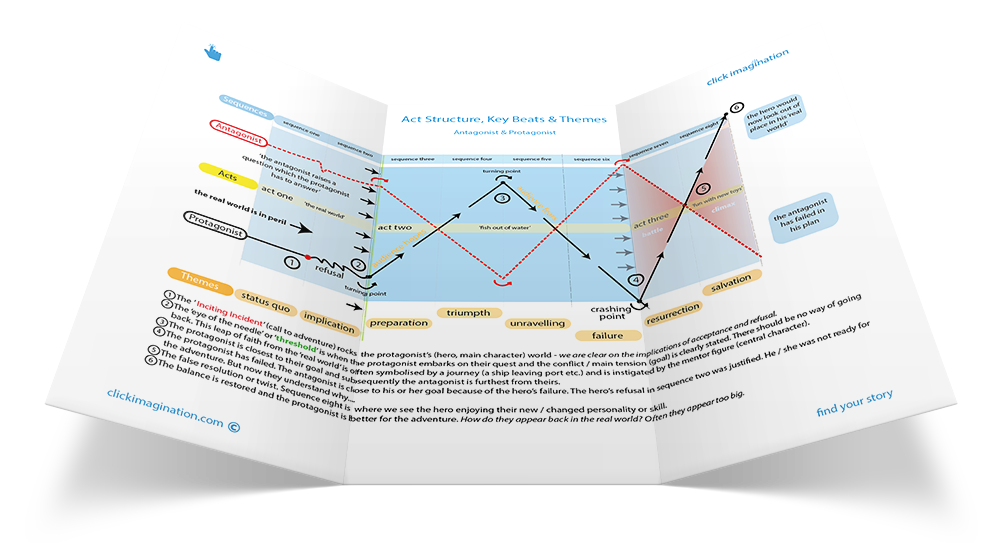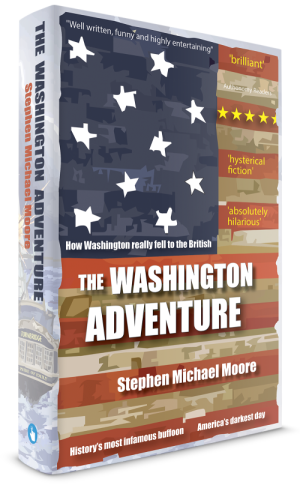Learn How to Write a Screenplay using Acts, Beats, Sequences and Themes
If you’ve decided to write a screenplay then it's important to get checked out by your doctor before you start. Just in case the urge is actually the symptom of some serious head injury. If the doctor fobs you off with ‘it’s perfectly normal, you’re just expressing your creative side’ then you are in real trouble. Writing screenplays isn’t actually normal. Novels, short-stories and doodling on toilet walls are normal outlets for creative expression. Writing a screenplay assumes from the outset that someone will want to dress every scene, design all the costumes and buy every prop you throw in without thought. Not to mention assuming you can find someone who shares your vision enough to direct it, speak the dialog and oh, pay for it. That’s right, pay money. You’re going to have to convince someone to stump of £1,000,000.00. And that’s just for a plain drama set on a housing estate with no aliens, explosions or actors who’ve actually worked before. If you want a car tumbling majestically down a cliff with the hero and their nemesis doing jujitsu in the back then think of a bigger budget and double it. Double it again. And Again. Then double it again for the prints and advertising.
The truth is, nobody wants your script posting to them and they’re going to open the envelope with a look of fear and revulsion saved only for the families of kidnapped foreign aid workers who wake to find a hand-shaped envelope postmarked Burkina Faso on their doormat. If we could stop every unsolicited script being posted in a year then we could probably save a rainforest and millions of tonnes of carbon. The problem is though… there are dreams in those envelopes - not a loved one's body parts. That’s a guy on a bus scribbling out the ultimate comedy car chase or a woman in a cafe with a laptop, dreaming of wizards. That’s what writers do. We write stuff that we love and expect everyone else to get the joke - straight away. Here’s a crazy observation. Most rejected writers aren’t bad and the story concepts aren’t cat poo either. The scripts are just put in an envelope and posted about two years earlier than they should have been.
So put on your favourite writing pants, take your MacBook to that sunny spot in the house that the cat loves and let’s learn from scratch how to craft a screenplay. In these tutorials were going to cover the basics of formatting, Act Structure, Beats, Sequences and Themes. And don't worry, it's not nearly as complicated as many hefty 'how to' books would have you believe.
If you’ve decided to write a screenplay then it's important to get checked out by your doctor before you start.
In this series of blog posts, we are going to cover some basic screenplay tips and tricks to help you beautifully hone your film or TV project. At this point it's worth quoting the writer William Goldman by saying 'nobody knows anything'. These pages are intended as guidance only and shouldn't be taken as gospel. In fact, always challenge 'rules' because in reality there are no such things - except gravity. That's pretty important - oh, and remember to cut away from yourself.
The purpose of Act Structure, Beats, Sequences and Themes is to keep the reader turning the pages or the viewer watching. The mechanics of how a writer makes that happen is not cast in tablets of stone. The majority of screenwriting tutors and 'how to' books teach a generic model for structure aimed at 'Spec Script' writers - which is to say writers who are producing a script without a paid commission. Production companies have their own shorthand which it is pointless to emulate with a spec script.
Keep in mind that unlike conventional prose - a novel or short story (basically anything but poetry) - a screenplay is not intended as a finished product in its own right. It also has many different purposes. This is important as many new writers dive straight into drafting a screenplay as if it's a novel.
Understanding screenplay formatting is also crucial as the layout itself is designed to allow the cast and crew to easily navigate the scenes and understand their part in the production. Don't get too hung up on layout just yet - that way lies madness - but understand that there are some basic rules - for example, 1 page of a screenplay represents 1 minute of screen time. We will explore layout in more depth later.
Unlike novels, a screenplay should have as little text on the page as is needed to serve the story. You don't need to fill the pages with pointless description. Only describe action and props etc that advance the story.

Myths
Before we dive headlong onto the mind thresher of structure, beats, sequences and all the seemingly technical stuff that comes with the hero's journey, let's bust a few common misconceptions.
- Firstly, structure isn’t plotting. It’s not about the detail of your story. It's broad brush strokes.
- Secondly, it’s not a formula. Formula would suggest an outcome based on a few set variables and structure has more freedom than that.
- Thirdly, it’s also not really about rules. Rules would suggest a harsh consequence if you didn’t follow them. In reality, the rules - if you call them that - are broken all the time - but in order to break them - without detriment to your story - you need to understand the part they play.
- Understanding structure doesn’t make a good writer bad but simply gives a writer a framework upon which to build or review their story.
- Structure doesn't hinder the creative process it provides a framework for discussion to allow writers, editors, producers, directors and actors to talk with confidence about a story and make improvements.
- A writer who understands structure hasn't sold their soul to the devil - that comes later. Understanding structure simply gives producers, directors and agents the confidence that the writer's not just flying on luck.

'William Peel is a brilliant character, an aristocratic buffoon– so wealthy he is beyond reproach, and lacking any self awareness, he makes for a superbly comic protagonist. This is a brilliant example of the historical comedy genre.'
Harper Collins


'A conversation with William Peel is like being stabbed in the head with a blunt knife covered in goat excrement'
The Prince Regent, 1814
'It’s a failing of the common man that he mistakes arrogance for simply the behaviour of his betters'
William Peel, Lord of Tornbridge

The complete Structure Chart showing Acts, Beats, Sequences and Themes.
All plotted alongside the protagonist and antagonist.
The ideal desktop companion for when you're planning your story.


